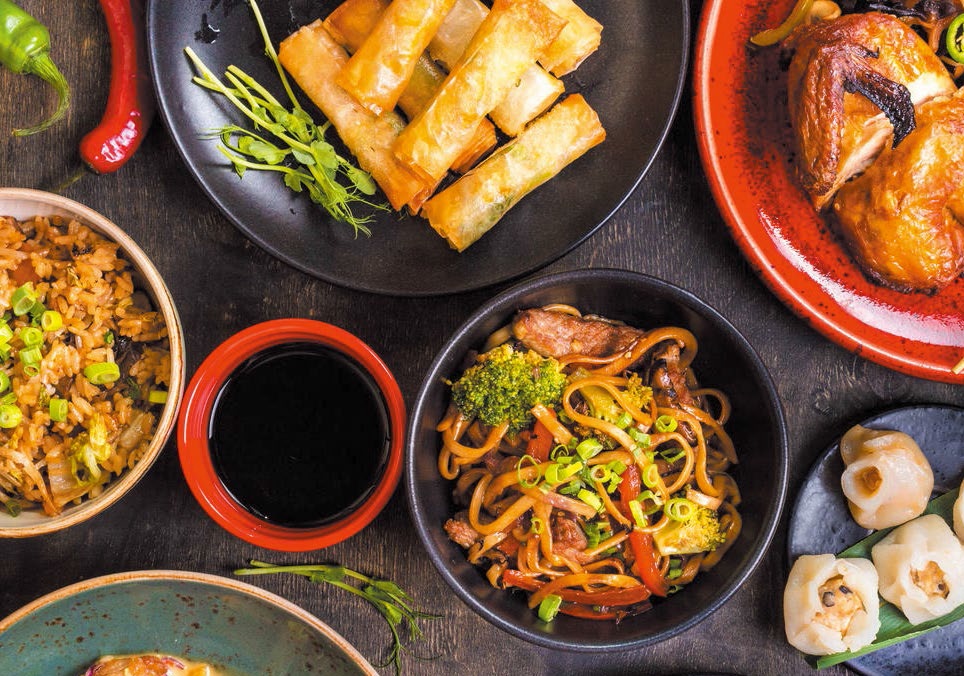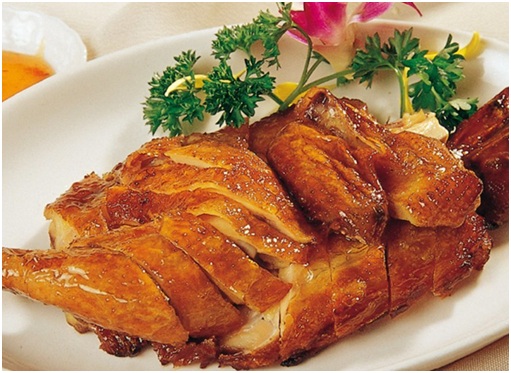What Makes Chinese Regional Cuisines Unique
By Rose Salas

一位著名的旅行家和美食博主Mark Wiens在YouTube上发布他关于中国美食的视频后,获得超过200万的观看次数!毫无疑问,世界是多样性的,美食爱好者尤其爱好风味独特的中国菜肴。
中国传统餐饮文化历史悠久,菜肴在烹饪中有许多流派。中国饮食文化的菜系,是指在一定区域内,由于气候、地理、历史、物产及饮食风俗的不同,经过漫长历史演变而形成的一整套自成体系的烹饪技艺和风味,并被全国各地所承认的地方菜肴。根据地理位置分为八种区域美食,分别是安徽,福建,广东,湖南,江苏,山东,四川和浙江。而根据烹饪的差异分为四种最有影响风格的菜系:粤菜,鲁菜,淮扬菜和川菜。中国菜讲究 “色香味” 俱全, 我们看看为什么每一类菜系都能牢牢抓住美食爱好者的胃,为什么那么与众不同,让吃货们流连忘返!
粤菜
通常简称广东菜或粤菜。 广东厨师认为,任何菜肴的口味必须均衡,不油腻。适量的香料很重要,确保它们不会压倒主要成分的丰富度和原味。
淮扬菜
淮扬菜是中国传统四大菜系之一,发源于扬州、淮安。菜系充满淮、扬特点。原料多以水产为主,淮扬菜系大多以江湖河鲜为主料,以顶尖烹艺为支撑,以本味本色为上乘,以妙契众口为追求,雅俗共赏而不失其大雅,尤其是“和、精、清、新”的独特理念。
鲁菜
鲁菜起源于山东的齐鲁风味,其发源地为山东省淄博市博山区,是中国传统四大菜系也是八大菜系中唯一的自发型菜系(相对于淮扬、川、粤等影响型菜系而言),是历史最悠久、技法最丰富、难度最高、最见功力的菜系。
川菜
川菜即四川菜肴,是中国特色传统的四大菜系之一、中国八大菜系之一、中华料理集大成者。川菜也不止是辣菜。
 Three things rank any Chinese meal - the colour, aroma and taste. These three factors will prove the uniqueness of Chinese culture when it comes to food. No doubt, the world loves every bits and pieces of the different varieties, and food lovers never forget this in their bucket list. Tourists can’t contain their admiration and fascination once they get to taste local eats from all the food streets in the country. A famous traveller and food blogger, Mark Wiens, had over 2 million views when he published his video tour on YouTube for the world to see how amazing Chinese cuisine is!
Three things rank any Chinese meal - the colour, aroma and taste. These three factors will prove the uniqueness of Chinese culture when it comes to food. No doubt, the world loves every bits and pieces of the different varieties, and food lovers never forget this in their bucket list. Tourists can’t contain their admiration and fascination once they get to taste local eats from all the food streets in the country. A famous traveller and food blogger, Mark Wiens, had over 2 million views when he published his video tour on YouTube for the world to see how amazing Chinese cuisine is!
Chinese cuisine is classified into eight regional cuisines based on geographic location. These eight provinces are Anhui, Fujian, Guangdong, Hunan, Jiangsu, Shandong, Sichuan and Zhejiang. However, the divergence of techniques in cooking is found in these four influential styles: Cantonese cuisine, Shandong cuisine, Huaiyang cuisine, and Szechuan cuisine. Let’s see why each one is far from ordinary!
Cantonese Cuisine
Commonly referred to as Guangdong or Yue cuisine. Cantonese cooks believe that the flavours in any dish must be well-balanced and not greasy. The right amount of spices is important, so it will not overpower the richness and original taste of the main ingredients. Not only do they focus on the lean meat, but also everything edible, such as chicken feet, frog legs, duck’s tongue, snails and snakes. To complement the meat flavour, they use sauces and condiments like vinegar, rice wine, soy sauce, as well as char siu, hoisin, shrimp paste, and black beans. Dried ingredients are preferred rather than fresh herbs. Their cooking style includes steaming, stir-frying, braising and deep frying. The traditional Cantonese favourites are fried rice, congee, steamed food like eggs, ground pork, spare ribs, stir-fried noodles, stewed beef brisket and sweet and sour fish/pork. The flavoursome and incredibly rich taste is also attributed to the influence of Oriental and Western cooking.

Stir-fried Beef Hefen
Huaiyang Cuisine
Tagged as one of the Four Great traditions in Chinese cuisine, this becomes the most distinguished and highly regarded style of Jiangsu cuisine. The use of Zhenjiang vinegar in its dishes gives the delightful flavours every notable choice, like the crab soup dumplings, dazhu gansi, jade shaomai, braised pork meatballs, potstickers, and noodles with shrimp and pork dumplings. Dishes are rarely spicy, but have a slightly sweet taste. Their main ingredient is pork or fresh-water fish with a soft texture when once cooked. Another great feature you would notice is the cutting technique of each meat. They pay so much attention to the temperature used in cooking, so the ingredients do not lose its freshness. Huaiyang menus are seen in big banquets not only in China, but around the world in hotels and fine dining restaurants.

Crab Soup Dumplings
Shandong Cuisine
Also called as Lu cuisine, this style of cooking is derived from the northern part which is the Shandong province. With so many cooking techniques associated in every dish preparation, such as liu (quick frying with flour), pa (stewing), zhu (boiling) and kao (roasting), the taste is guaranteed fresh and mouth-watering. The light and milky broths of favourite seafood, like scallops, prawns, sea cucumbers and clams give a distinct flavour without that tang. Maize is a staple crop that adds texture to food to make it starchy and thick. The delicate flavours of sweet cabbages, mushrooms, eggplants, and other staple vegetables give the scrumptious taste of every dish with real freshness and pleasant aroma. Jiǔqūdàcháng (pig’s large intestine) and Bàochǎoyāohuā (stir-fried pig’s kidney) are widely-known dishes in Shandong cuisine. A typical, yet a top favourite of President Mao, is the dish called Dezhou Stewed Chicken - stewed and marinated with honey, spices, condiments, and fennel - tickle your taste buds, as you savour the goodness up to bones!

Dezhou Stewed Chicken
Sichuan Cuisine
Known in the southwest and also termed as Szechwan or Szechuan, this cuisine style is very famous for its spicy and powerful taste. Because the main spices include peppers, chili, and garlic, expect the taste from mild to piping hot goodness! Most dishes are cooked in chili oils, with preserved food, like pickles and dried chili. Sichuan pepper is the signature spice present in every meal. Although there are more than 20 cooking techniques, the most utilized of them all are stir frying, braising and steaming. Expect numbing sensation, as you taste food like hot and sour noodles and soups, kung pao beef tendons or chicken, spicy fish slices, mapo tofu, hotpots, and a lot more! Shuǐzhǔ Ròu or water-cooked meat of boiled meat slices is a perfect meal for a cold day.

Stir-Fried Tofu in Spicy Sauce
There you have it! These Four Major Cuisines or Four Cooking Styles in China are indeed a significant contribution to the food world. What is your must-try among these cuisines?